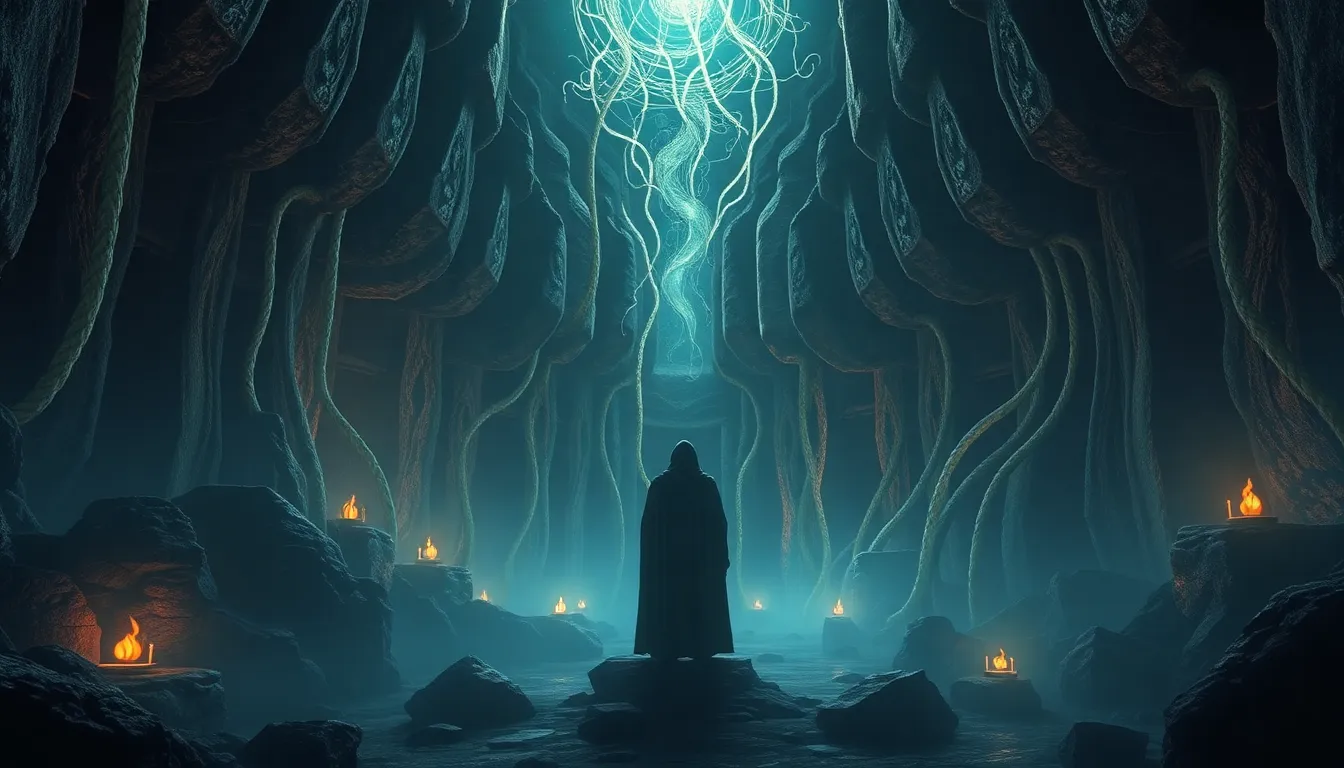Underworld Myths: The Secrets of the Afterlife Uncovered
Introduction to Underworld Myths
Underworld myths are narratives that explore the nature of the afterlife, detailing what happens to souls after death. These stories hold significant cultural importance, as they reflect society’s beliefs, values, and fears surrounding mortality. Across various civilizations, underworld myths serve not only to explain the unknown but also to provide comfort and guidance to the living.
This article aims to delve into the rich tapestry of underworld myths from different cultures, examining their historical origins, symbolic meanings, and contemporary interpretations. By uncovering these secrets of the afterlife, we can gain a deeper understanding of human existence and the beliefs that shape our understanding of death.
Historical Perspectives on the Afterlife
The beliefs surrounding the afterlife have evolved considerably from ancient civilizations to modern times. In early societies, death was often viewed as a transition to another form of existence rather than an end. This belief has been depicted in numerous historical texts and artifacts.
Some key historical figures and texts that have shaped afterlife beliefs include:
- Homer’s “The Odyssey”: Offers glimpses into Greek views on the afterlife.
- The Egyptian Book of the Dead: A guide for the deceased navigating the afterlife.
- Plato’s dialogues: Philosophical inquiries into the soul and its immortality.
Major Underworld Myths from Different Cultures
Across the globe, various cultures have developed unique underworld myths:
Greek Mythology: Hades and the River Styx
In Greek mythology, Hades is the realm of the dead, ruled by the god Hades. The River Styx serves as a boundary between the living world and the underworld. Souls are ferried across the river by Charon, the boatman, provided they have received proper burial rites.
Egyptian Mythology: The Duat and the Judgment of the Dead
The Duat is the Egyptian underworld, where souls undergo judgment. Osiris, the god of the afterlife, presides over the weighing of the heart against the feather of Ma’at, symbolizing truth and justice. A soul deemed worthy is granted eternal life, while the unworthy face annihilation.
Mesopotamian Beliefs: The Land of the Dead and its Deities
In Mesopotamian mythology, the afterlife is depicted as a dreary place known as the Land of the Dead, ruled by the goddess Ereshkigal. Souls are believed to dwell in darkness, and offerings to the dead were essential for ensuring their peace.
Norse Mythology: Hel and the Afterlife Journey
Norse mythology introduces Hel, the realm of the dead, governed by the being Hel. The journey to this underworld is marked by various trials, and the fate of the soul depends on their life deeds and the manner of their death.
Symbolism and Archetypes in Underworld Myths
Underworld myths are rich in symbolism and archetypes that convey deeper meanings about death and the afterlife. Common symbols include:
- Rivers: Often symbolize the barrier between life and death.
- Gates: Represent the transition into the afterlife.
- Guardians: Figures like Charon and Anubis serve as protectors of the passage to the afterlife.
Archetypal figures such as Charon, Anubis, and the Grim Reaper embody humanity’s complex relationship with death and the afterlife.
The Role of Rituals and Practices in Afterlife Beliefs
Rituals and practices play a crucial role in afterlife beliefs, serving to honor the deceased and ensure their safe passage. Different cultures exhibit unique burial practices:
- Egyptians: Elaborate mummification and tomb construction for the afterlife journey.
- Greeks: Offerings and proper burial rites to appease the dead.
- Norse: Ship burials symbolizing the voyage to the afterlife.
These rituals are vital for maintaining connections with the deceased and providing comfort to the living.
Philosophical Implications of Underworld Myths
Underworld myths reflect cultural attitudes towards death and mortality, often shaping ethical and moral frameworks. They provoke existential questions about the nature of life and the consequences of one’s actions. For instance, beliefs in divine judgment encourage individuals to live virtuously, while fear of the unknown can drive philosophical inquiry into the meaning of life.
Contemporary Interpretations of Underworld Myths
Modern literature, art, and media often portray themes of the underworld, reflecting humanity’s enduring fascination with the afterlife. Works such as Dante’s “Inferno” and films like “Coco” illustrate how these myths continue to resonate today.
Additionally, there has been a resurgence of interest in ancestral and spiritual practices, with people seeking connections to their heritage and the wisdom of past civilizations.
Comparative Analysis: East vs. West
Eastern and Western concepts of the afterlife exhibit both differences and similarities. In Western traditions, the afterlife is often seen as a final destination, while Eastern beliefs, such as those in Hinduism and Buddhism, emphasize cyclical concepts like reincarnation.
Notable myths from Eastern traditions include:
- Hinduism</: The cycle of samsara and karma guiding the soul's journey.
- Buddhism: The concept of Nirvana as liberation from suffering and the cycle of rebirth.
Psychological Insights into Fear and Fascination with the Afterlife
The human psyche exhibits a complex response to the concepts of death and the afterlife, often oscillating between fear and fascination. Underworld myths serve as coping mechanisms, providing narratives that help individuals process mortality and existential concerns. They offer frameworks for understanding the inevitable, allowing people to confront their fears and uncertainties regarding death.
Conclusion: The Enduring Legacy of Underworld Myths
Underworld myths continue to influence contemporary society, shaping our perceptions of death and the afterlife. They offer insights into cultural narratives and the human experience, reminding us of our shared mortality. Understanding and preserving these myths is essential for future generations, as they provide a lens through which we can explore the profound questions of existence and the mysteries of what lies beyond.



